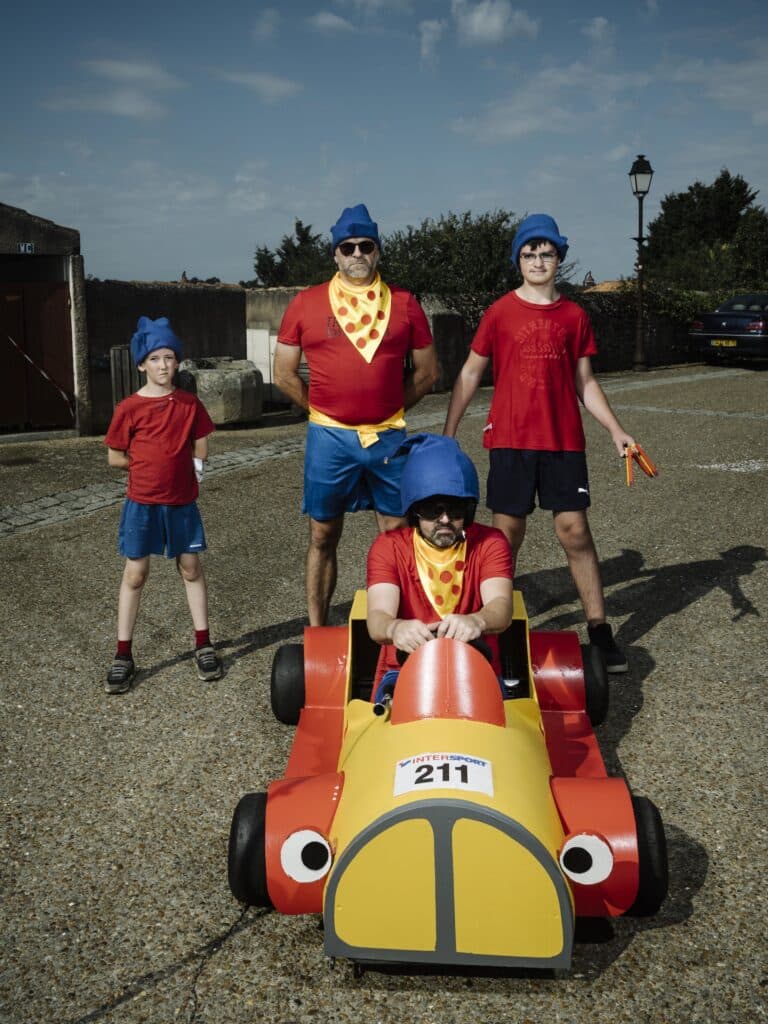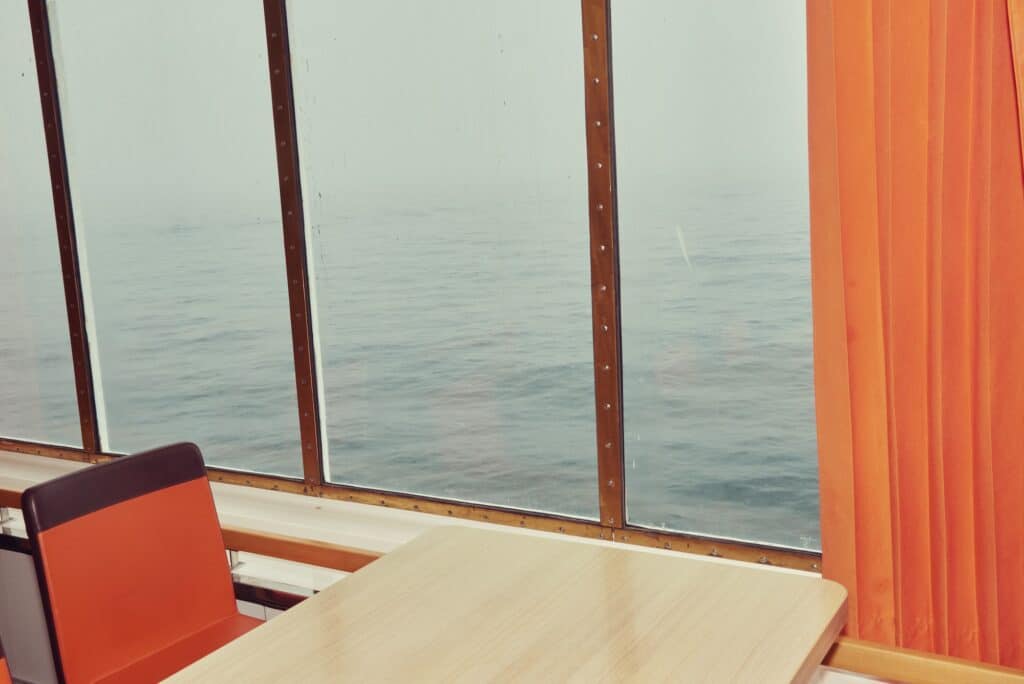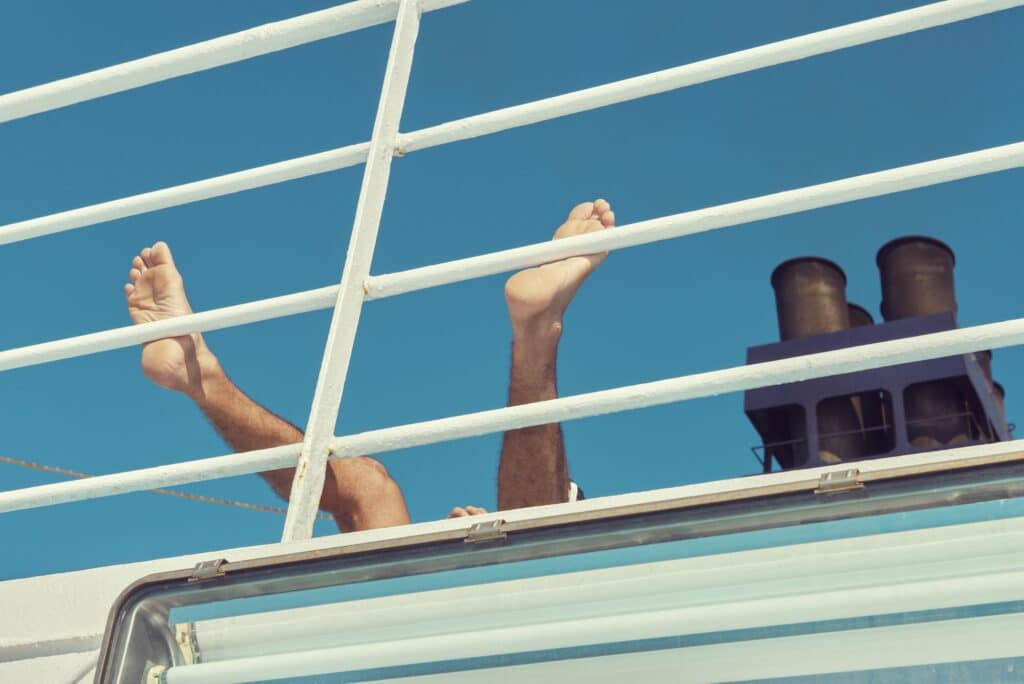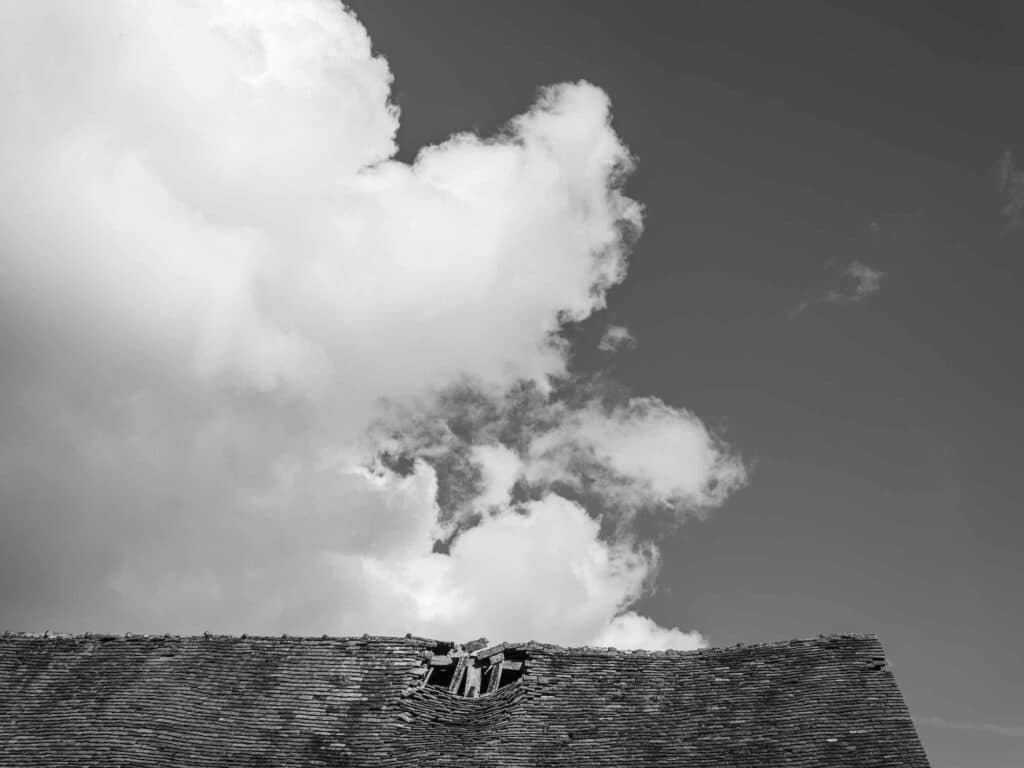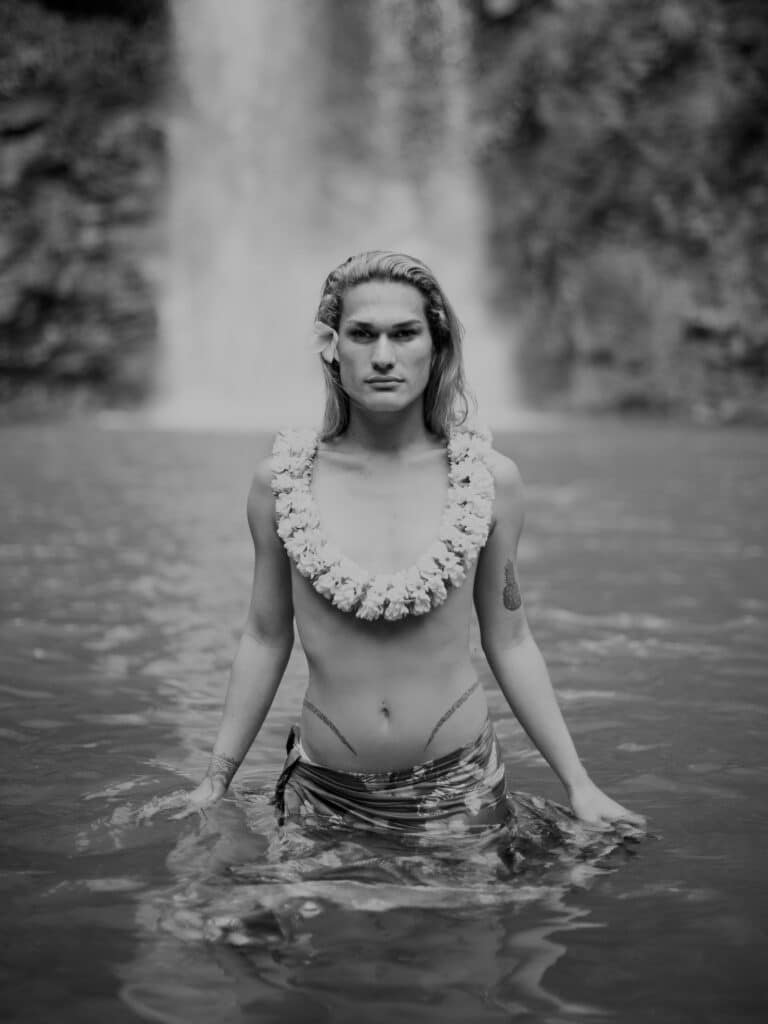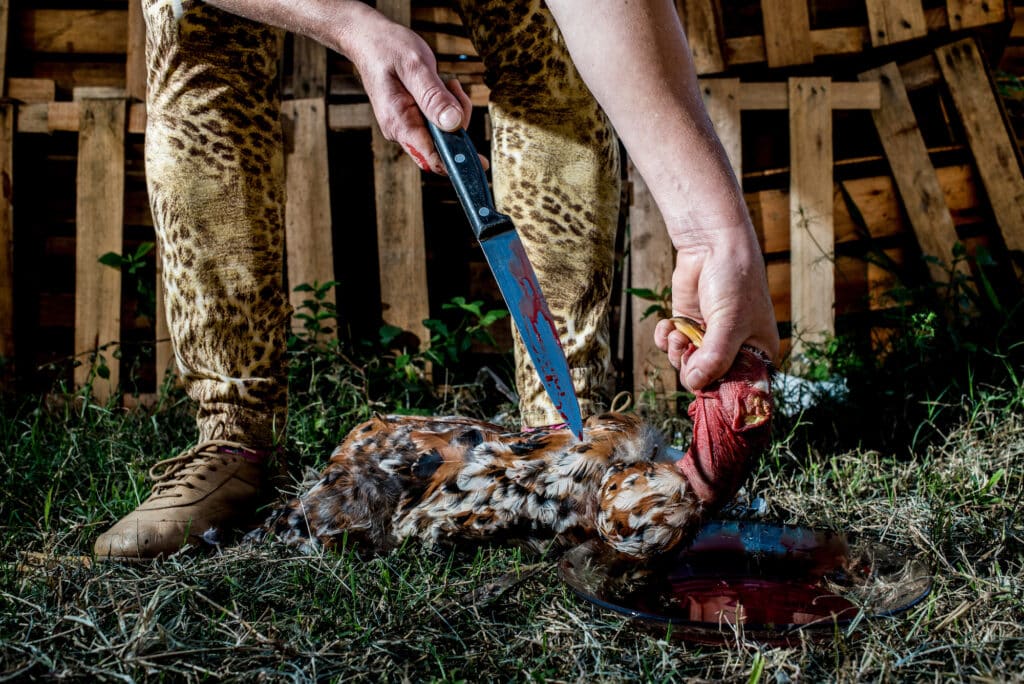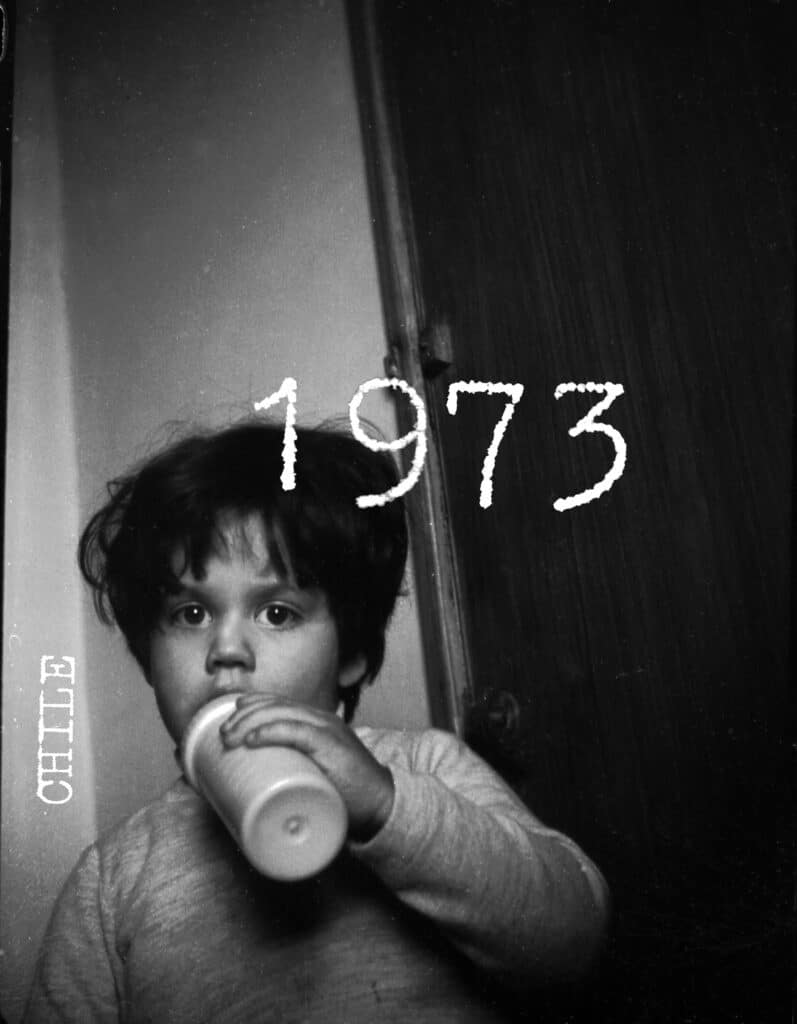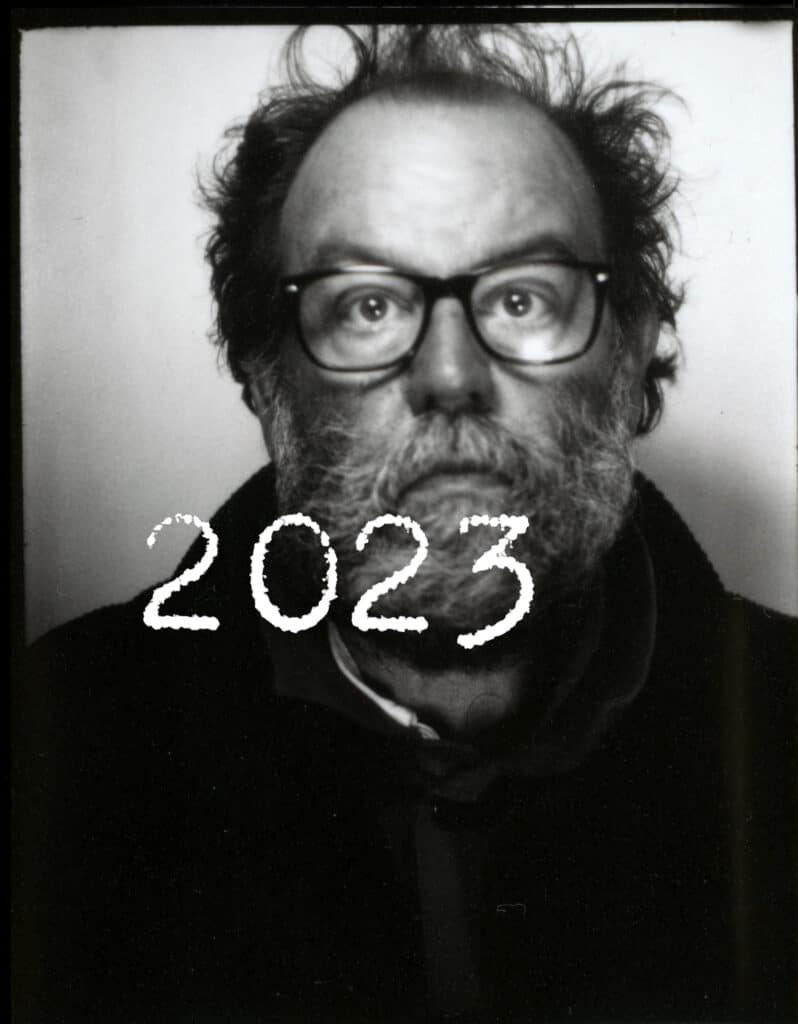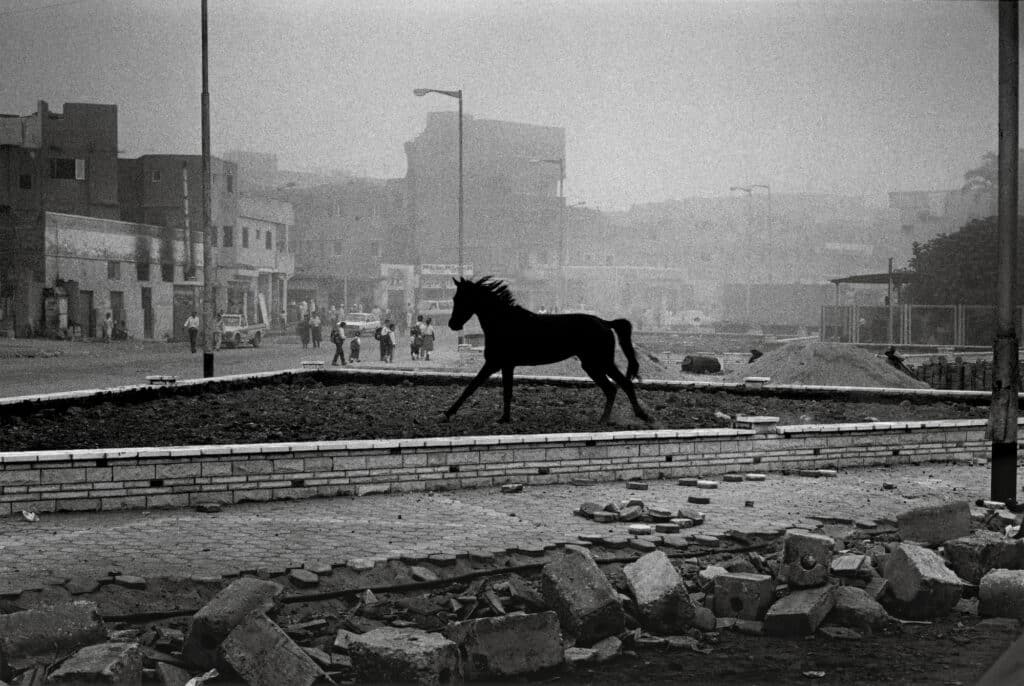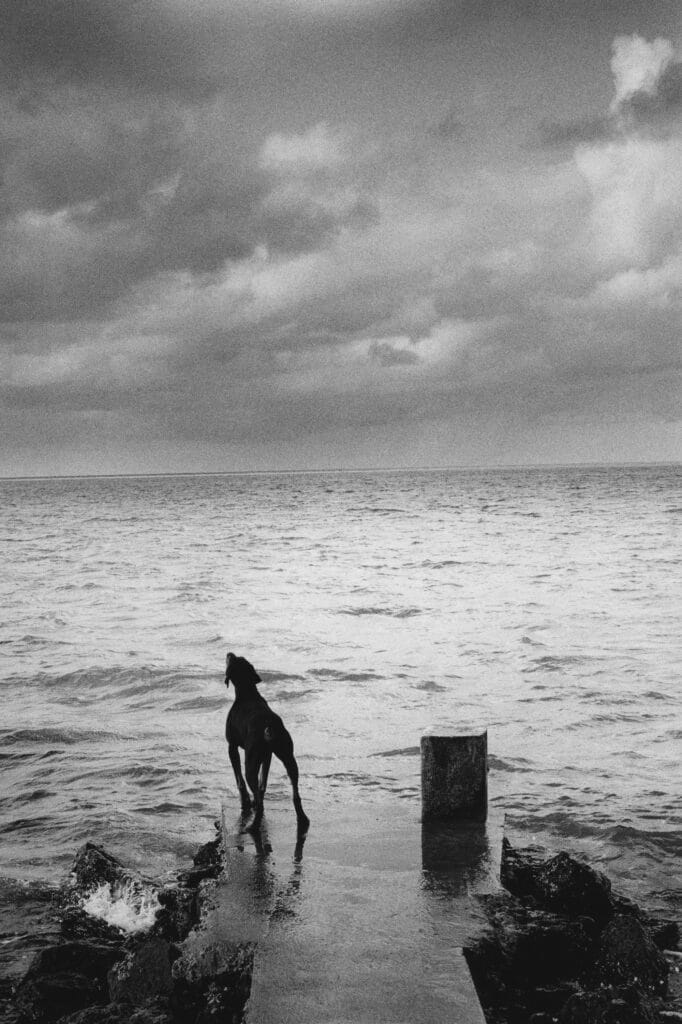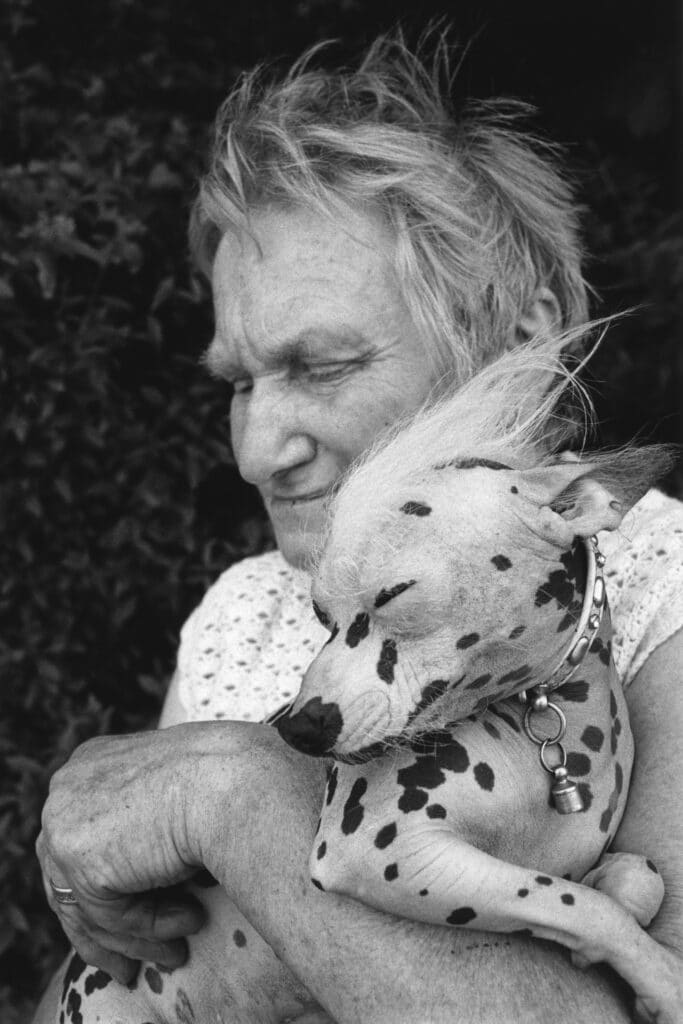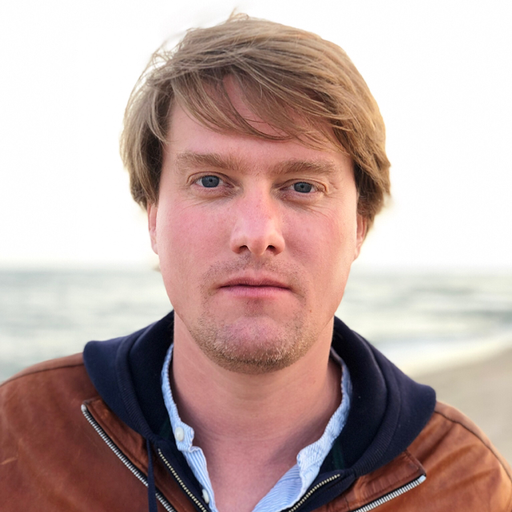For weeks, the world of photography has been abuzz about artificial intelligence. AI is likewise a hot topic in Sète, in the south of France: while some shrug it off, others are excited. To all, one thing is certain: AI is here to stay, and it is bound to revolutionize the world of the image. But what it will certainly not replace is the human warmth of a photo festival, especially one like ImageSingulières. Nor will it diminish image lovers’ desire to talk about the work of the photographers, discuss the recent world events they cover, or celebrate their hard labor with a glass of wine and music playing in the background.
“My frustration: not being able to be everywhere at once. When the twins festival was going on Brittany, there was a dishware festival in the Vaucluse.”
Frédéric Stucin
Fetes just happen to be the topic tackled by the French portrait photographer Frédéric Stucin, a regular on the covers of top magazines, distinguished by his cinematographic style and remote flash that’s like a bolt of lightning in the face, even in the middle of the day. Stucin crisscrossed France in search of the most original country festivals, balls, fairs, carnivals, ferias, pig shows, big foot festivals, soapbox races…
Stucin’s project was carried out as a major photojournalism commission initiated by the Bibliothèque Nationale de France in 2021. Reminiscent of the Great Depression-era FSA project in the United States and of the French Datar which documented the country in 1984–89, “Radioscopy of France” selected 100 documentary photographers to photograph France, awarding each 22,000 euros to produce their work.
“In 2003 or 2004,” says Stucin, “I did a report for the French newspaper Libération in Bulle, in the Doubs (France), during the bigfoot festival. The atmosphere was very upbeat, very family oriented. There was a pool where you could jump in with your big feet, there was a big buffet, and big tables to sit at, like in Asterix & Obelix. When the BNF talked to us about doing a ‘Radioscopy of France,’ I said to myself that it would be interesting to check out what was happening around France, to get out of the city. So I went to about ten festivals over the summer, at the rate of one, two, or even three per weekend. My frustration: not being able to be everywhere at once. When the twins festival was going on Brittany, there was a dishware festival in the Vaucluse.”
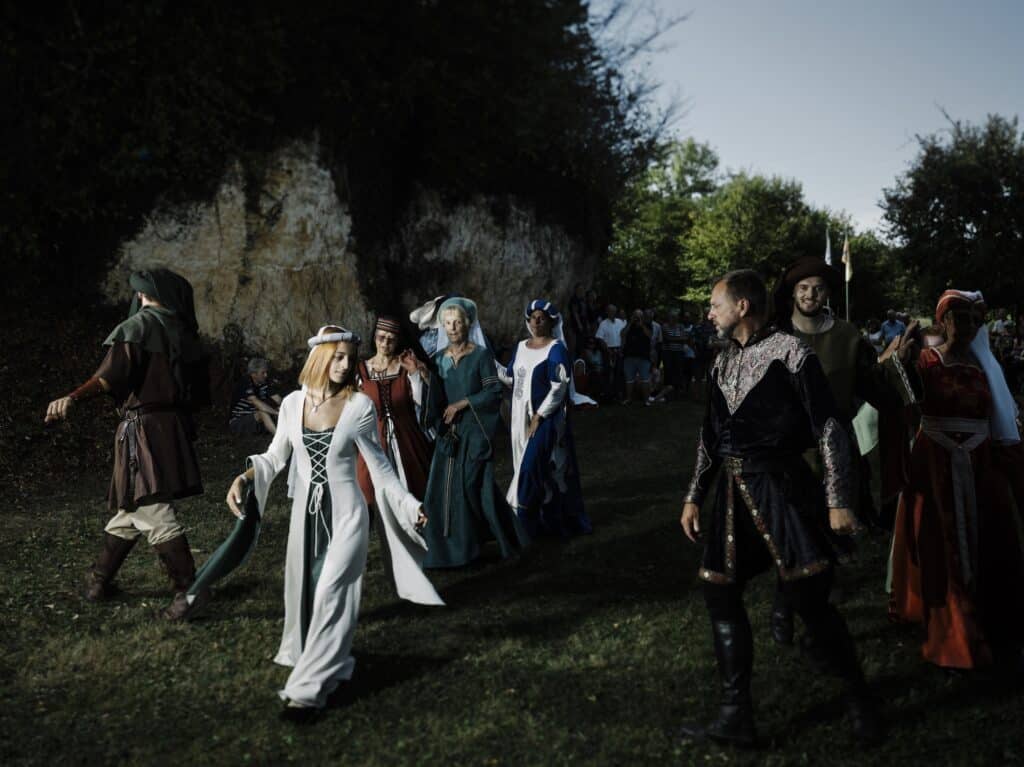
In Sète, over the Ascension weekend, photography rubs shoulders with a flea market, where you can buy a Claudie Pierlot red sweater for one euro, sample seafood, and find a punk-music dance partner between the ages of 7 and 77, one of the little-known quirks of this endearing town. Many other quirks are highlighted by the artists invited to the residency funded by the festival. This year, the Italian photographer Lorenzo Castore explored the streets of Sète, producing a sensitive portrait in black and white, which is exhibited at Fort Richelieu, the building that has towered over the city since the eighteenth century.
At the Centre photographique documentaire, the festival’s dedicated venue, ImageSingulières presents, through early August, six photographers from the BNF’s photojournalism commission, including Frédéric Stucin, as well as Valérie Couteron, Stéphanie Lacombe, Pierre Faure, Richard Pak, and Kourtney Roy. Thanks to partnerships between the Parisian institution and French festivals (of which there are more than 70), their varied projects travel around the country. “There are 10 million people living below the poverty line in France (1,100 euros),” explains Pierre Faure, who before becoming a photographer worked for the French Post Office.
“My project, France Périphérique, has looked at the lives of these people since 2015. I photograph one region after another. In Sète, I exhibit images made in New Aquitaine. In particular, there is a portrait of two brothers who used to be cattle farmers, with 80 cows, and whose farm was put into liquidation. I met them in a support group, which helps them to cope. These are people whom society tells they’re not needed. They’re the ones who feed us. It’s mind-boggling.”
Outside France
On the other side of the globe, in French Polynesia, Richard Pak photographed rae-rae, trans-women who have been accepted in Tahitian society for centuries, whereas our Western societies have only recently opened up to queer and third-gender subjects. The official poster of the festival, a portrait of transgender Shana, half-naked at the foot of a waterfall, was vandalized at the Sète train station, proof that we still have a long road ahead before we change the mindsets. “This is a proof that we’ve made the right choice,” notes Gilles Favier, the festival’s director.
True to tradition, ImageSingulières offers a survey of the social sphere through some long-term reports on contemporary issues. Eric Garault questions the place of humans in their environment. He traveled to Minas Gerais in Brazil, once the richest region in the country, and made portraits of peasants neglected by the Brazilian economic expansion and left behind by the world’s progress, but who find their own ways of living according to the rhythms of nature and becoming eco-responsible.
“What is the roça? It is the countryside, the rural world with its traditions, where men and women live according to the solar cycles,” he explains. “Among them, there are neo-rural people who have come to revive the fazendas. I thought I was chronicling a world doomed to disappear, but I realized that I ended up photographing the rebirth of the roça.” Garault put together a photo book published by Courtes et Longues, which, unusual in today’s publishing world, did not ask him to pay 15 or 20,000 euros to produce it.
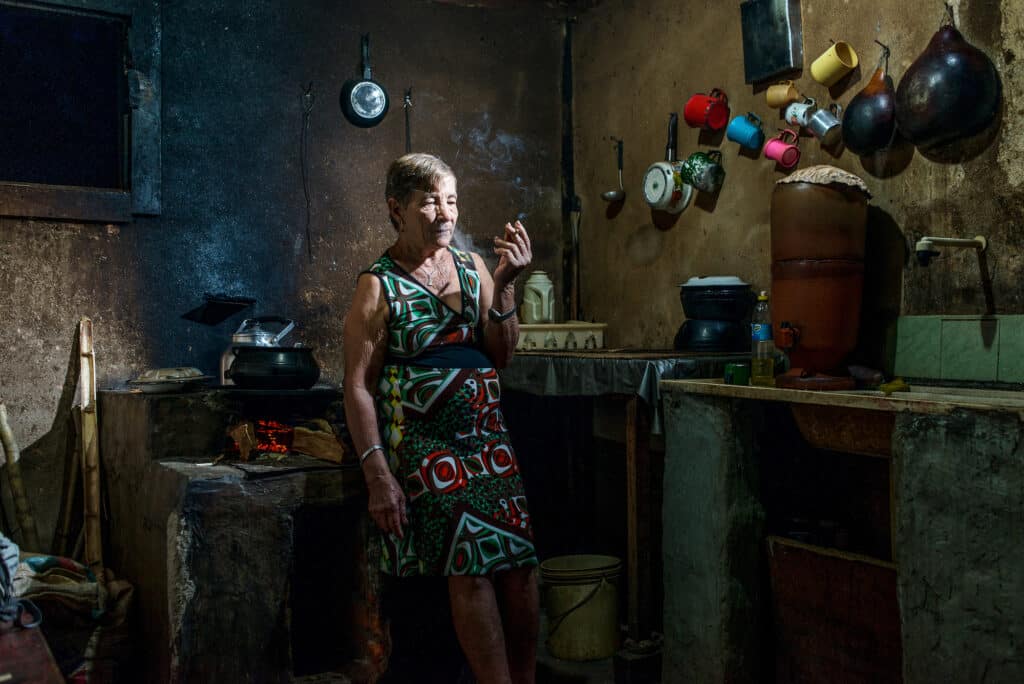
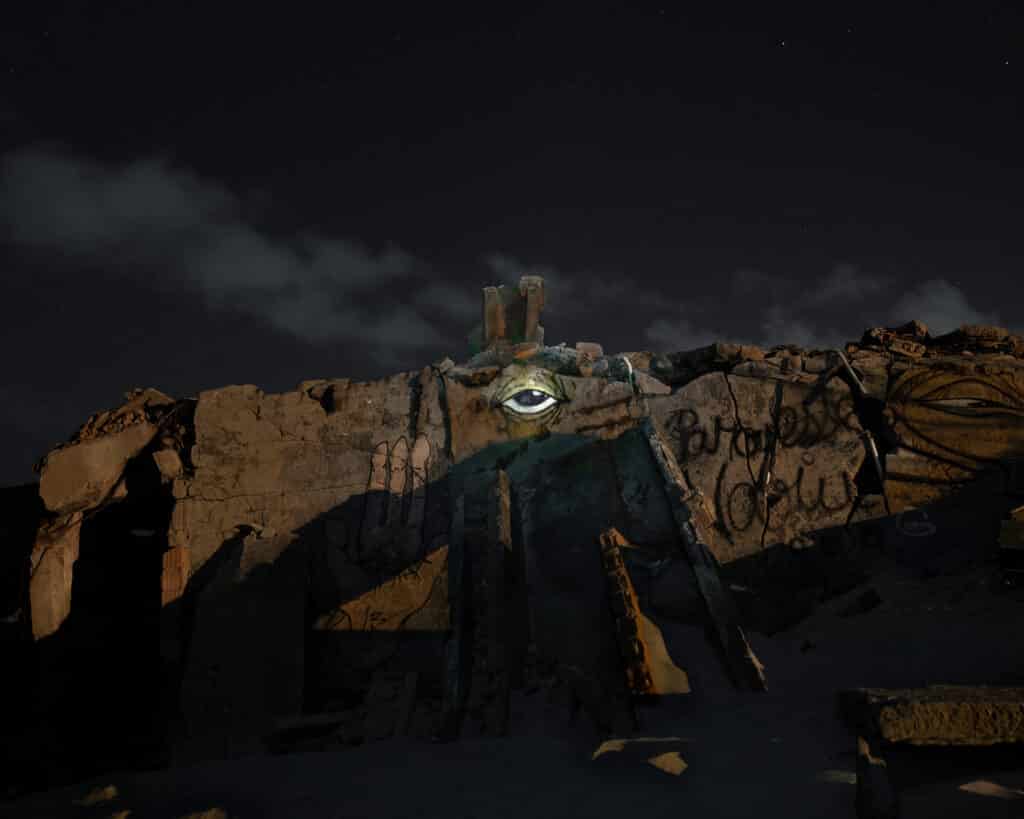
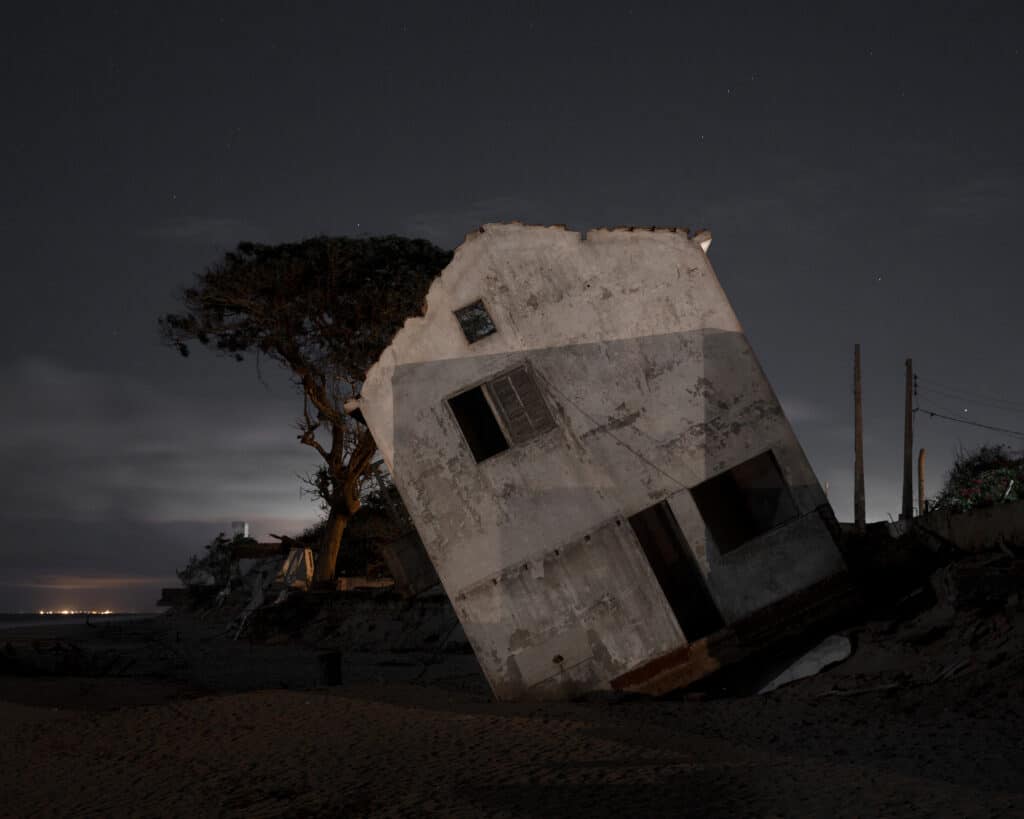
In Brazil, there is also Atafona, a small town located in the delta of the Paraíba do Sul River, where the waters are rising so fast that they reduce the houses built along once-paradisiacal beaches to mere ruins. Felipe Fittipaldi document this Atlantis-like phenomenon in his series Eustasy.
Using intimate portraits and archival images, Rodrigo Gomez Rovira, a Chilean residing in France, revisits Pinochet’s coup d’état of 1973, which he witnessed as a young boy, and which led his family to seek refuge in France. “My first childhood memories go back to the time of the military coup in Chile. “I was barely five years old… I remember the fireplace where my mother used to burn books at night. I remember a man knocking at our door at sunset when curfew caught him out in the street. My mother opened the door, handed him a blanket and a plate of food, and he spent the night in the hallway. I remember the plane trip. And then France… The reunion with my father. The apartment in the Fossés Jean housing estate in the city of Colombes.”
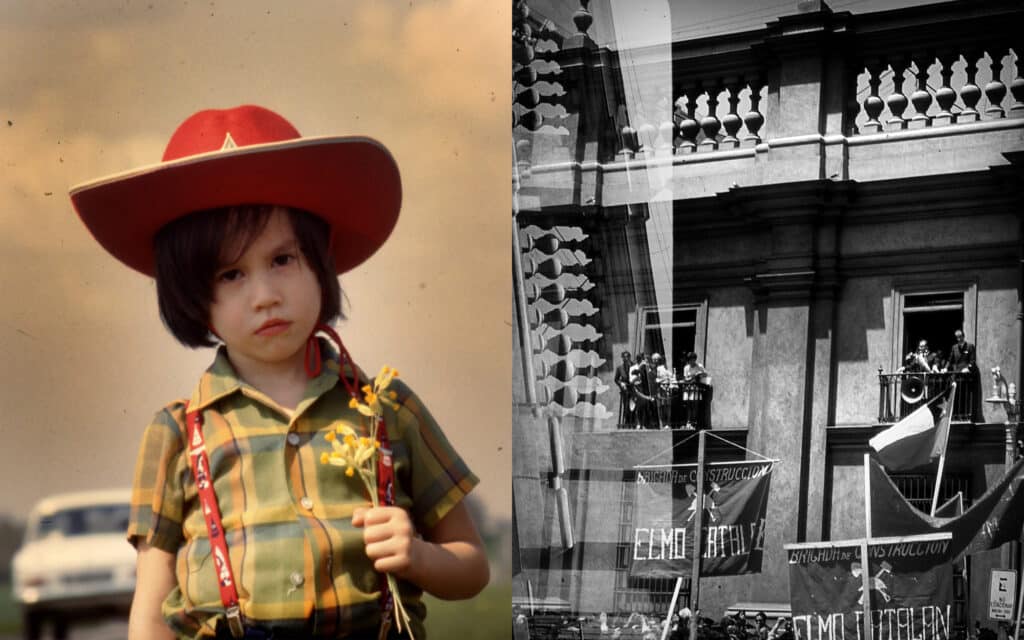
ImageSingulières, with a budget of about 250,00 euros in 2023, down 100,000 euros from previous years due to cuts in public subsidies, would not be such a widely respected festival if it did not pay tribute to some of the greatest photographers of our time.
“Photography is very simple, you either see or you don’t see”
Michel Vanden Eeckhoudt
Michel Vanden Eeckhoudt, exhibited at the Chapelle du Quartier Haut, was a Belgian photographer well known for his photos of animals with distressed gaze, in situations of danger, a kind of unhappy animal kingdom that questions its condition. Ironically enough, dogs are not allowed in his exhibition.
“Photography is very simple, you either see or you don’t see. You have to be there, to have seen, to have captured, and captured well. A successful photograph is a small miracle where chance played a big role. You have to stack the cards in your favor: be in the right place at the right time, camera in hand, good shoes on your feet, go hunting for butterflies and befriend chance.”
Festival Images Singulières, Sète, until June 11, 2023. Select exhibitions until August 6, 2023.

